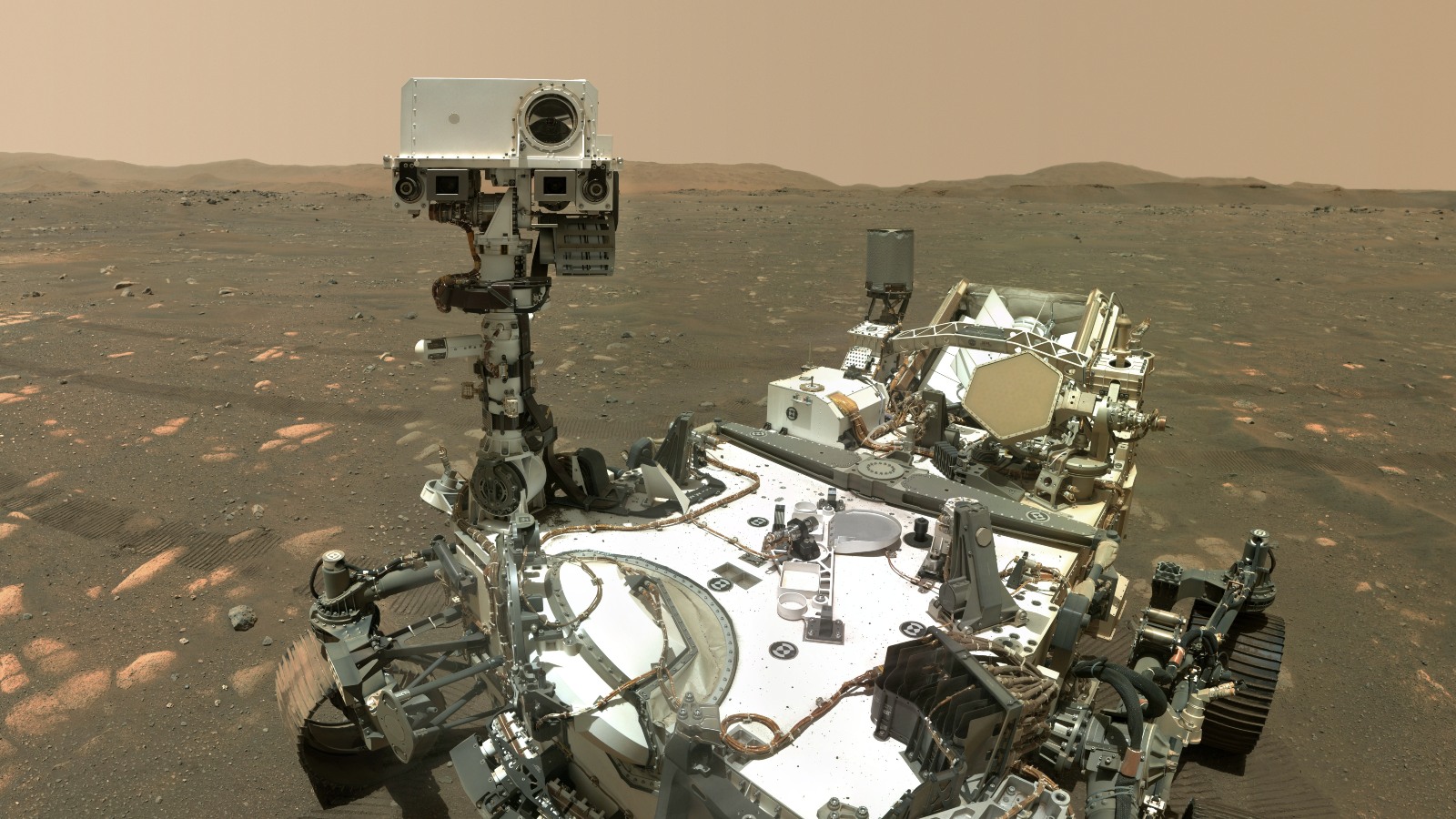NASAThe Perseverance rover has discovered a very unusual rock on the surface of Mars. The lumpy boulder, which has a metal-rich composition, is likely a meteorite that fell on the Red Planet, and is the first boulder Perseverance has discovered during its four-year mission to search for signs of life on Martian rocks.
Since landing in Jezero Crater on Mars in early 2021, Perseverance has discovered many different rocks, including spider egg stone, misplaced “skull” and, more recently, bizarre formation in the shape of a turtle. Some of these rocks have also yielded surprising results, such as the strange nodules recently discovered in organic-rich samples that may be “the clearest sign” extraterrestrial past life on Mars.
So far, the one thing that all the rocks examined by Perseverance have in common is that they originated on Mars. But on September 19, during the 1629th sol (Martian day) of the rover's mission, the wandering robot came across a strange boulder while exploring the Jezero area, dubbed “Vernodden.” The unusual rock, measuring about 31 inches (80 centimeters) across, has since been named “Phippsaxla” – and is unlikely to be of Martian origin.
“This rock was identified as a point of interest based on its sculpted, towering appearance, which contrasted with the low-lying, flat and fragmented surrounding rocks,” Candice Bedfordgeochemist and mineralogist from the Department of Planetary Science at Purdue University, wrote in the article NASA Statement.
Analysis of the rock showed that it had high concentrations of iron and nickel, which is unusual for Martian rocks. But these metals are usually found in meteorites“suggesting that this rock formed somewhere else solar system“Bedford wrote. It is unclear how long it has been on Mars, but it is likely millions, if not billions, of years old.
“This is not the first time a rover has encountered an exotic rock on Mars,” Bedford wrote. In fact, three different NASA rovers—Spirit, Opportunity and Curiosity—have discovered potential meteorites during their missions, she added. (Of these missions, only Curiosity is still active.)
“It was therefore somewhat surprising that Perseverance did not see iron-nickel meteorites in Jezero Crater, especially since it is similar in age to Gale Crater. [where Curiosity currently resides]”Bedford wrote.
Although the potential meteorite was discovered approximately two months ago, the discovery was only now announced due to the recent US government shutdown. NASA's statement about Phippsaxle was originally written on October 1, the same day the shutdown began, and was released on November 13, the day after the government reopened.
The shutdown turned out to be quite an eventful one for NASA. Live Science Space.com sister site recently reported that officials likely began implementing the agency's proposed budget cuts at this time, before they were approved by Congress. And since the quarantine ended, NASA scientists have been busy sharing information. never-before-seen images of interstellar comet 3I/ATLAS.
However, Perseverance remained online throughout the shutdown, along with several other “critical operations.”

Martian meteorites
Although meteorites are rare on Mars, here on Earth we have found many space rocks that came from Mars.
These Martian meteorites were ejected by other large meteorites on Mars and then fell to Earth after drifting through space for thousands of years. They are highly valued by scientists because they can tell us a lot about the rocks on Marslike Perseverance.
In 2024, one study found that about 200 Martian meteorites fell to Earth. arose from just five different impact craters on the Red Planet.
And in July, one Martian meteorite—a 54-pound (24.5-kilogram) space rock dubbed NWA 16788 that crashed into the Sahara Desert in 2023—was destroyed. sold at auction for $5.3 millionwhich is a new record for a Martian space rock.








